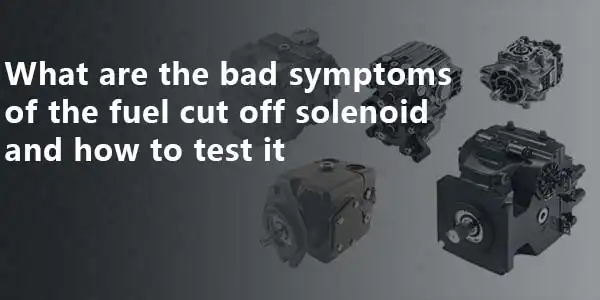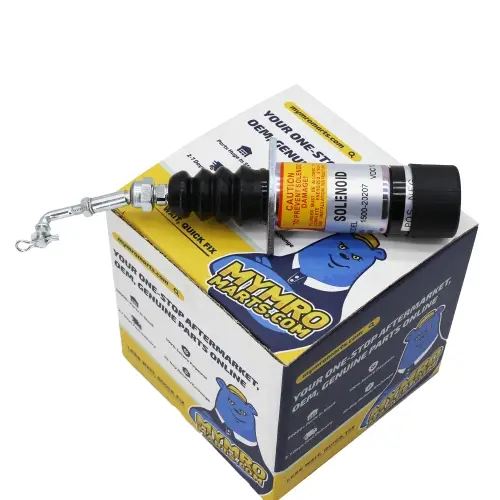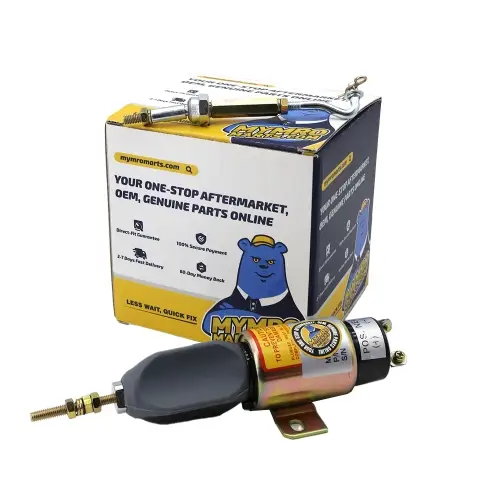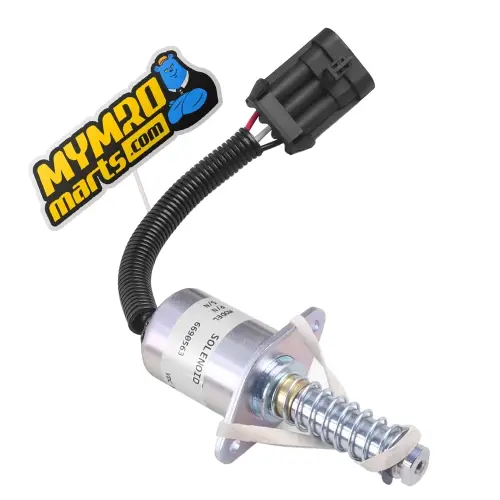What are the bad symptoms of the fuel cut off solenoid and how to test it?
MyMROmarts discovered from conversations with numerous customers that a lot of individuals are unaware of the signs of a malfunctioning fuel cut off solenoid. In order to address customer concerns and improve customer understanding of fuel cut off solenoid products, we wrote an article on the signs of a bad fuel cut off solenoid, instructing customers on how to test fuel cut off solenoid at home so that customers can calmly handle the bad symptoms when they arise.
What are the symptoms of a bad fuel cut off solenoid?
Many internal combustion engines have fuel cut off solenoid valves that control the fuel delivery as an important component. The performance of the engine may be impacted by a number of issues that can result from this solenoid valve failing. Today MyMROmarts will tell you what are the symptoms of a bad fuel cut off solenoid.
1. Engine stalling or starting issues
Two of the main signs of a faulty diesel engine fuel shut off solenoid are an engine that stalls or that is completely impossible to start. One of the signs of a bad diesel fuel shutoff solenoid valve is the engine stalling or having trouble starting. When the engine is not in use or in an emergency, the function of the solenoid valve of the fuel solenoid valve is to cut off the flow of gasoline to the engine. If this solenoid sticks or fails, the engine may not get fuel, which may cause the engine to stall or fail to start.
2. Sudden Engine Shutdown
A broken gasoline shutoff solenoid can potentially cause an abrupt and unexpected engine shutdown while the heavy vehicle is moving. A loose connection or an electrical issue with the solenoid's internal circuitry could be to blame for this erratic situation. The engine may stop abruptly if the solenoid is unable to operate properly and obstructs the gasoline flow.
3. Fuel Leakage
Another symptom of a faulty fuel solenoid shut off is fuel leakage. If the solenoid becomes damaged or develops a crack, it may cause fuel to leak from the component. This could be risky and create a fire hazard. To avoid any damage or potential safety risks, it is essential to get the solenoid inspected and repaired right away if you smell fuel or see any indications of leakage.
4. Unusual Engine Performance
A malfunctioning fuel shutoff solenoid can cause erratic engine performance. You may experience rough idling, uneven acceleration, or a lack of power during operation.This is due to the inadequate or inconsistent fuel supply reaching the engine. In addition, the engine may perform poorly under particular circumstances, for example when the heavy vehicle is loaded or traveling quickly. These anomalies in the engine's performance are signs that the fuel shutdown solenoid might be broken.
How to test fuel shut off solenoid?
The diesel fuel shut off solenoid is crucial in controlling how much fuel gets to the engine. A thorough testing procedure is essential if you feel that your fuel relay shut off valve is not working properly.MyMROmarts will give you advice on the best way to test a fuel solenoid shut off valve in this article.
Prioritizing safety is crucial before starting any testing programs. ensure that the engine is turned off and the key to the ignition is out before continuing. Then disconnect the battery to prevent any accidental starting.
We need to first check the wiring connections that lead to the diesel shut down solenoid. Look for any loose or damaged wires, frayed insulation, or signs of corrosion. Make sure all connections are secure and clean. If any problems are detected, fix them first and retest the solenoid valve after fixing the wiring.
After that we need to test the diesel fuel cutoff solenoid, you need to prepare a multimeter beforehand. Set the meter to the appropriate voltage range and connect the positive lead to the solenoid valve terminal and the negative lead to a ground source. With the ignition key in the "ON" position, measure the voltage across the solenoid valve terminals. A reading close to the vehicle's battery voltage indicates that the power to the solenoid is OK.
Then we need to determine if the solenoid valve is working properly, you need to manually activate it. Locate the solenoid and apply 12 volt power directly to the solenoid's terminals. You can do this by connecting a separate power source (such as a battery) to the solenoid. If you hear a distinct click, this means the solenoid valve is engaging properly.
After the final solenoid valve activates, you can verify fuel flow. Disconnect the fuel line from the solenoid valve and place it in the container. Re-energize the solenoid valve. If fuel continues to flow into the container, the solenoid valve is working properly. However, if the fuel flow is weak, inconsistent, or non-existent, the diesel fuel cutoff solenoid is faulty, and further inspection or replacement is required.
 Track Your Order
Track Your Order









